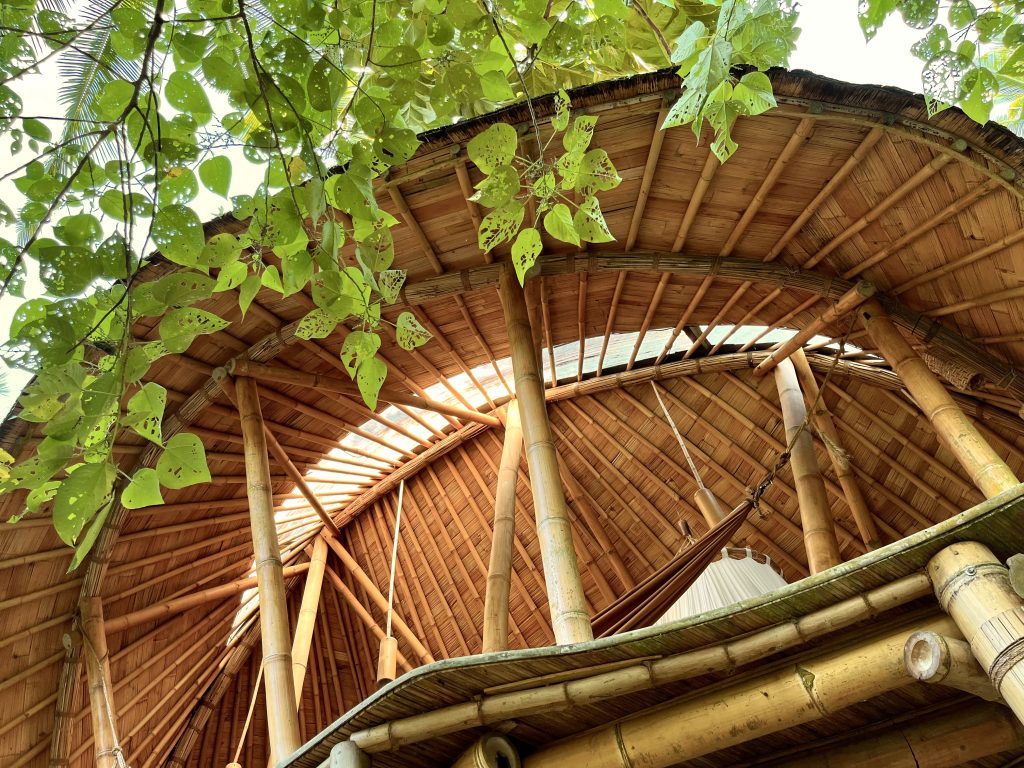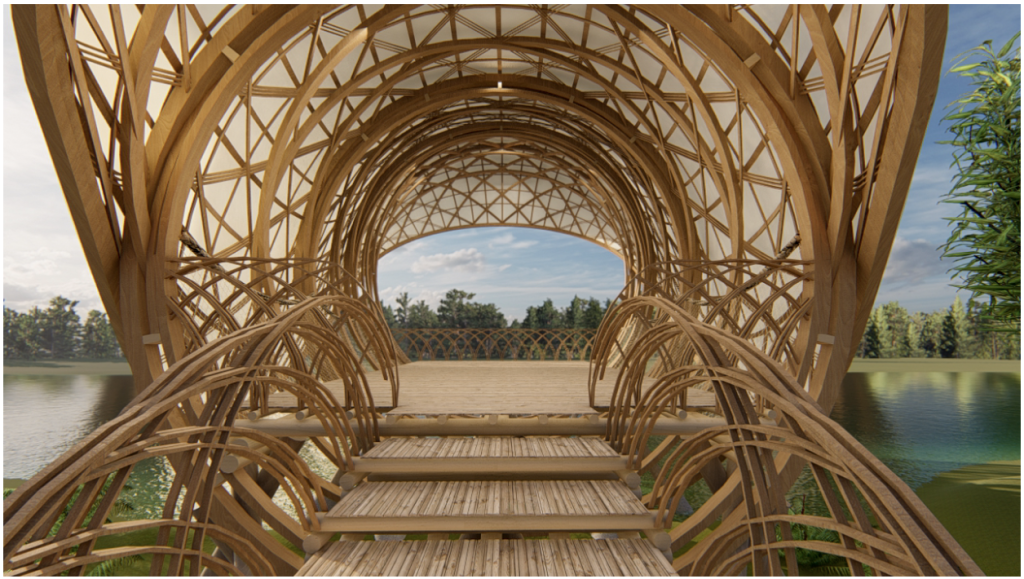Thailand, a country known for its vibrant culture, stunning landscapes, and delicious food, has recently been making waves in the world of architecture with its remarkable bamboo structures. These innovative designs not only showcase the creativity of Thai architects but also highlight the country’s commitment to sustainability. From stunning bamboo resorts to intricate temples, Thailand’s bamboo architecture is attracting both tourists and locals alike. In this article, we will explore some of the most noteworthy examples of this sustainable trend and discover how these awe-inspiring structures are redefining the architectural landscape of Thailand. So, get ready to be amazed as we delve into the world of Thailand’s remarkable bamboo architecture!
Overview of Bamboo Architecture in Thailand
Introduction to Bamboo Architecture
Bamboo architecture is an innovative and sustainable approach to construction that has gained significant popularity in Thailand in recent years. This unique architectural style utilizes bamboo, a versatile and eco-friendly material, to create stunning structures that blend seamlessly with nature. From urban environments to eco-tourism resorts, bamboo has become a central element in the design and development of buildings in Thailand.
Thailand’s Focus on Sustainable Design
Thailand has long been recognized for its commitment to sustainable development and environmental stewardship. The country’s rich natural resources, including its vast bamboo forests, have inspired architects and designers to incorporate sustainable materials into their projects. By embracing bamboo architecture, Thailand is not only promoting ecological consciousness but also preserving its cultural heritage and traditional craftsmanship.
The Rise of Bamboo Architecture in Thailand
In recent years, there has been a significant rise in the popularity of bamboo architecture in Thailand. This can be attributed to several factors, including the growing awareness of sustainable practices, the versatility and strength of bamboo as a building material, and the pioneering work of Thai architects and designers. As a result, bamboo structures have become increasingly prevalent in various settings, from residential buildings and resorts to public spaces and cultural institutions.
Traditional Thai Architecture and Bamboo
Influence of Traditional Thai Architecture
Traditional Thai architecture, with its emphasis on natural materials and harmonious coexistence with the environment, has played a significant role in shaping bamboo architecture in Thailand. The design principles of Thai architecture, such as open spaces, elevated platforms, and organic forms, seamlessly merge with the use of bamboo as a building material.
Historical Use of Bamboo in Construction
Bamboo has been used in construction in Thailand for centuries. Its lightweight yet durable properties made it an ideal material for building houses, temples, bridges, and other structures. Traditional techniques, such as interlocking joints and bamboo weaving, were employed to create sturdy and resilient buildings that could withstand the elements.
Adapting Traditional Techniques for Modern Bamboo Architecture
In modern bamboo architecture, traditional techniques have been adapted and refined to meet contemporary design and construction standards. Architects and engineers have developed innovative methods to enhance the structural integrity of bamboo buildings, such as the use of steel reinforcement and modern joinery techniques. These advancements have allowed for larger and more complex bamboo structures to be realized, without compromising on safety and longevity.
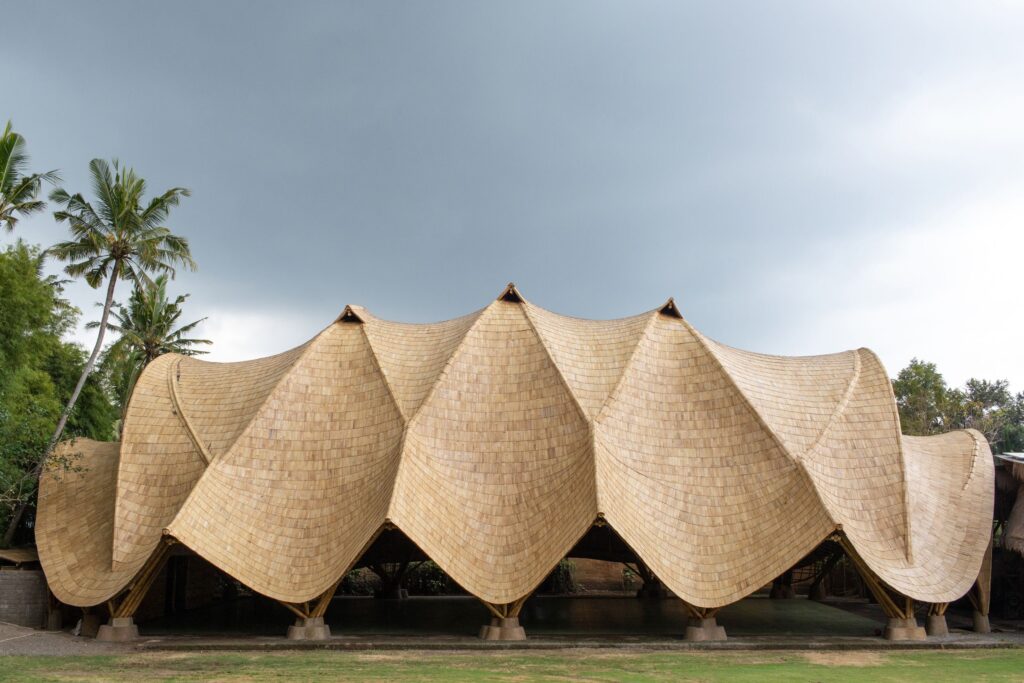
Bamboo as a Sustainable Building Material
Characteristics and Benefits of Bamboo
Bamboo possesses several unique characteristics that make it an ideal sustainable building material. Firstly, bamboo is one of the fastest-growing plants on Earth, with some species capable of growing up to 3 feet per day. This rapid growth rate ensures a readily available and renewable supply of bamboo for construction purposes. Additionally, bamboo is incredibly strong and flexible, with a tensile strength that rivals that of steel. This makes it an excellent alternative to conventional building materials like concrete and timber.
Environmental Advantages of Bamboo
The use of bamboo in construction offers numerous environmental advantages. Bamboo plants absorb large amounts of carbon dioxide and release oxygen into the atmosphere, helping to mitigate the effects of climate change. Furthermore, bamboo cultivation requires minimal water and does not require the use of harmful pesticides or fertilizers. By utilizing bamboo, architects and designers can significantly reduce the carbon footprint of their projects and contribute to a more sustainable built environment.
Comparison with Conventional Building Materials
When compared to conventional building materials, bamboo stands out as a highly sustainable option. Unlike timber, bamboo can be harvested without causing deforestation or depleting natural resources. The regenerative nature of bamboo ensures a constant supply of construction material without the negative environmental impacts associated with the extraction of other materials. Furthermore, the lightweight nature of bamboo reduces the energy required for transportation and construction, resulting in a smaller carbon footprint overall.
Architectural Innovations in Thailand
Bamboo Structures in Urban Environments
Bamboo architecture is not limited to rural settings but has gained traction in urban environments as well. Architects in Thailand have successfully integrated bamboo structures into the fabric of cities, creating innovative and eye-catching designs that blend harmoniously with their surroundings. From skyscrapers with bamboo facades to pedestrian bridges and pavilions, these urban bamboo structures serve as symbols of sustainable design in the heart of bustling urban centers.
Bamboo as an Element of Modern Design
Beyond its traditional use as a construction material, bamboo has become an integral part of modern design in Thailand. Architects and designers are incorporating bamboo elements into their projects as a way to infuse natural aesthetics and warmth into contemporary spaces. From furniture and interior finishes to decorative screens and light fixtures, bamboo adds a touch of elegance and sustainability to modern architectural designs.
Integration of Bamboo and Greenery
Bamboo architecture in Thailand often emphasizes the integration of greenery within the structures. Green facades and living walls are commonly incorporated into bamboo buildings, providing natural insulation, improving air quality, and creating a harmonious connection between the built environment and nature. This integration of bamboo and greenery not only enhances the aesthetics of the structures but also contributes to the overall sustainability and well-being of the occupants.
Innovative Use of Bamboo in Public Spaces
Public spaces in Thailand have seen incredible innovations in the use of bamboo as a building material. From amphitheaters and exhibition halls to community centers and recreational facilities, bamboo structures have become focal points of communal activities. These innovative designs not only provide functional spaces but also serve as sustainable landmarks that inspire environmental consciousness and appreciation for Thai culture.
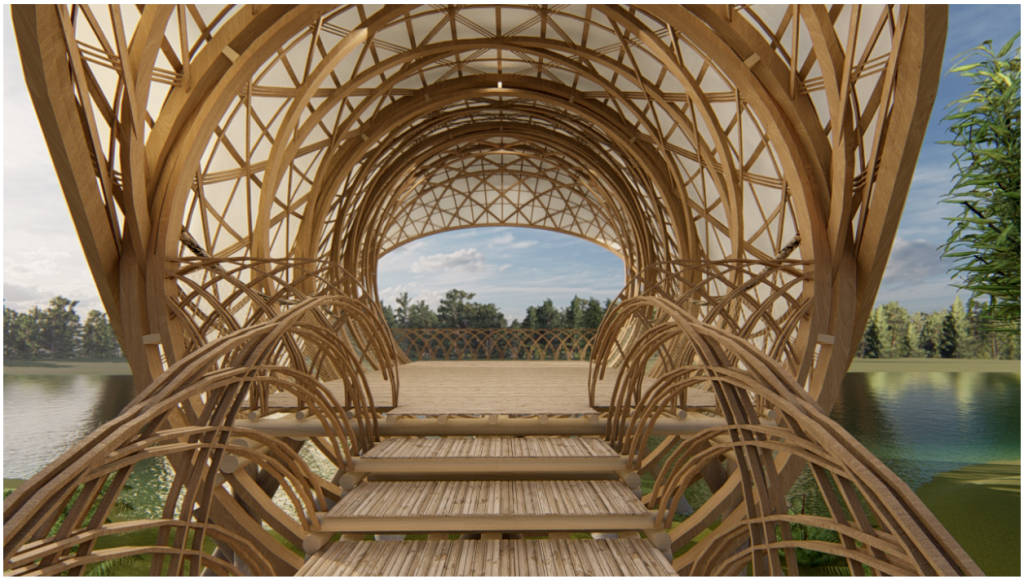
Famous Examples of Bamboo Architecture in Thailand
Baan Dam Museum: The Black House
One of the most famous examples of bamboo architecture in Thailand is the Baan Dam Museum, popularly known as the Black House. Located in Chiang Rai, this unique museum showcases the works of renowned Thai artist Thawan Duchanee. The museum complex consists of over 40 structures, all constructed using bamboo and other natural materials. The Black House is a testament to the versatility and artistic potential of bamboo architecture, with its dark hues and intricate designs captivating visitors from around the world.
The Bamboo Sports Hall at Chiangmai Life Construction
The Bamboo Sports Hall at Chiangmai Life Construction in Chiang Mai is another remarkable example of bamboo architecture in Thailand. This multi-purpose sports venue was constructed using a combination of bamboo and steel, creating a visually stunning and sustainable structure. The hall’s innovative design and use of sustainable materials have earned it international recognition, making it a showcase for the potential of bamboo in modern construction.
The Empire Sustainable Condominium
The Empire Sustainable Condominium in Bangkok is an exemplary project that demonstrates the integration of bamboo architecture into urban residential developments. This high-rise condominium complex features bamboo cladding on its exterior, creating a vibrant and eco-friendly façade. The use of bamboo not only enhances the aesthetic appeal of the building but also provides natural ventilation and insulation, reducing the building’s energy consumption.
The Bamboo Pavilion at Bangkok Art Biennale 2018
The Bamboo Pavilion, showcased at the Bangkok Art Biennale in 2018, exemplifies the artistic possibilities of bamboo architecture. Designed by Thai architect Boonserm Premthada, this pavilion captivated visitors with its intricate bamboo lattice work and organic form. The Bamboo Pavilion served as a gathering space for art enthusiasts and emphasized the beauty and sustainability of bamboo as a building material.
Bamboo Architecture in Eco-Tourism
Bamboo Resorts and Retreats
Thailand’s bamboo architecture has found a unique niche in the eco-tourism sector. Bamboo resorts and retreats have sprung up across the country, offering visitors a sustainable and immersive experience amidst nature. These resorts showcase the versatility of bamboo, featuring bamboo cottages, restaurants, and recreational facilities that blend seamlessly with the surrounding landscapes.
Eco-Friendly Bamboo Accommodations
Bamboo accommodations have gained popularity among eco-conscious travelers seeking sustainable alternatives to traditional hotels. Bamboo huts, cabins, and treehouses provide comfortable and eco-friendly lodging options that prioritize harmony with nature. These accommodations allow guests to reconnect with the environment while minimizing their ecological footprint.
Sustainable Bamboo Tourism Initiatives
Thailand’s bamboo architecture has played a pivotal role in promoting sustainable tourism initiatives. Local communities have embraced bamboo as a means to develop their tourism infrastructure while preserving their cultural heritage and natural landscapes. Through the construction of bamboo-based visitor centers, community lodges, and observation decks, Thailand is showcasing the country’s commitment to sustainable tourism practices and the unique beauty of its bamboo architecture.
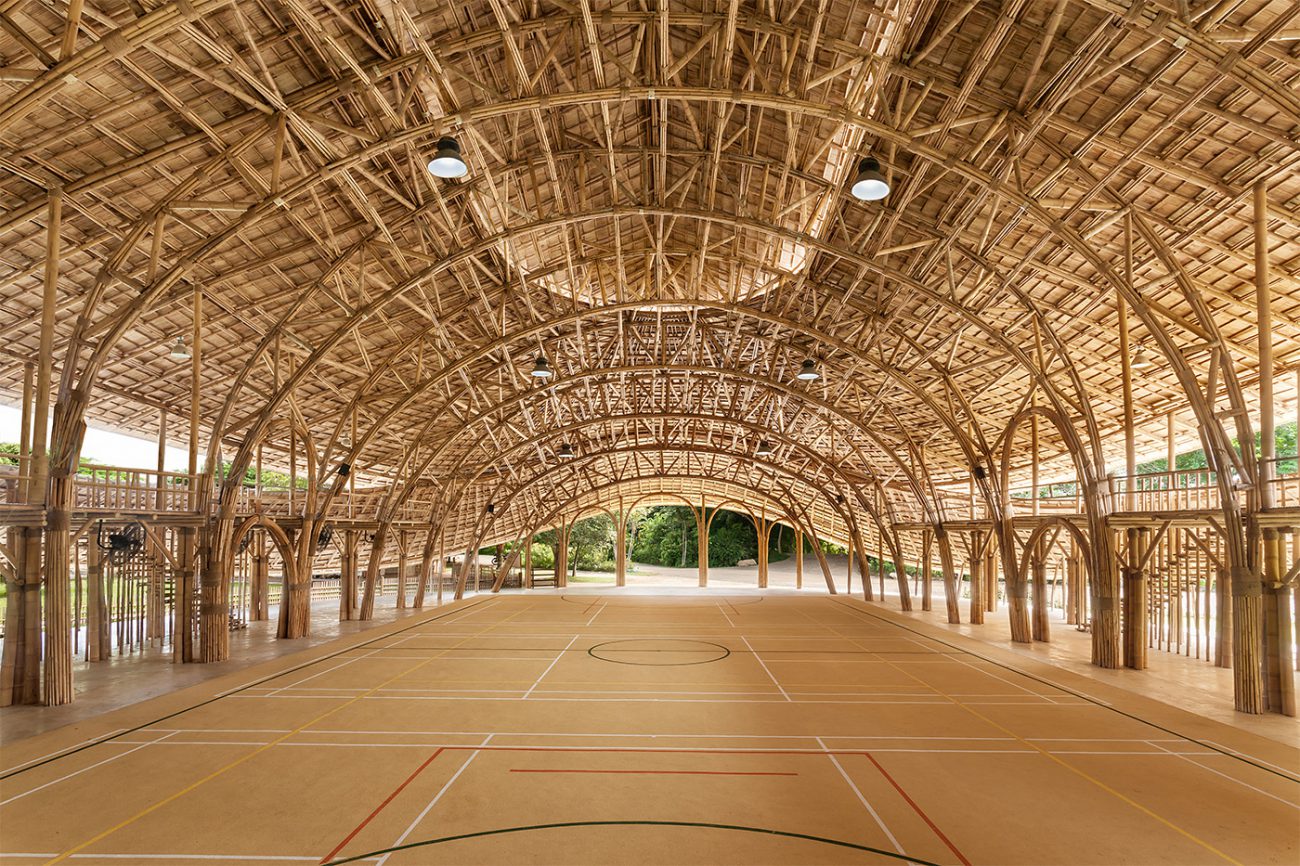
Cultural Significance of Bamboo in Thailand
Symbolism and Traditional Beliefs
Bamboo holds deep cultural significance in Thailand. It is often associated with strength, flexibility, and resilience, making it a symbol of endurance and adaptability. Bamboo is believed to bring good luck and prosperity, and its presence in homes and temples is thought to ward off evil spirits. The cultural significance of bamboo has influenced its use in traditional ceremonies, religious rituals, and ornamental crafts.
Artistic Expressions through Bamboo
Bamboo has long been cherished by Thai artisans for its artistic potential. Skilled craftsmen and weavers have transformed bamboo into intricate patterns, delicate jewelry, and decorative objects. Bamboo sculptures, baskets, and musical instruments are highly regarded for their craftsmanship and aesthetic appeal, reflecting Thailand’s rich artistic heritage.
Bamboo in Festivals and Events
Bamboo plays a prominent role in various festivals and events throughout Thailand. The annual “Yi Peng” lantern festival in Chiang Mai features thousands of lit lanterns made from bamboo and rice paper floating into the night sky, creating a breathtaking spectacle. Bamboo is also used in traditional dance performances, where intricately woven bamboo props and instruments enhance the visual and auditory experience.
Challenges and Future Prospects
Structural Integrity and Longevity
While bamboo is a remarkable building material, challenges arise when it comes to ensuring its structural integrity and longevity. Climate factors such as humidity and pests pose risks to bamboo structures, requiring careful design, treatment, and maintenance to overcome these challenges. Ongoing research and advancements in bamboo engineering are essential to address these concerns and ensure the long-term viability of bamboo architecture.
Regulations and Building Codes
Bamboo architecture in Thailand faces regulatory challenges, as building codes and standards may not adequately address the unique characteristics and construction techniques of bamboo buildings. Collaborative efforts between architects, engineers, and regulators are necessary to establish comprehensive guidelines and codes that facilitate the safe and efficient construction of bamboo structures.
Education and Skills Development
To fully embrace bamboo architecture, there is a need for education and skills development initiatives that equip architects, engineers, and construction professionals with the knowledge and expertise to work with bamboo effectively. Training programs, workshops, and academic courses can help capitalize on the potential of bamboo as a sustainable building material and foster a skilled workforce.
Advancements in Bamboo Engineering
Advancements in bamboo engineering are crucial to push the boundaries of bamboo architecture in terms of design possibilities and structural applications. Research and innovation in areas such as bamboo composites, engineered bamboo products, and sustainable treatment methods are continually expanding the potential of bamboo as a building material. Collaborative efforts between academia, industry, and government entities are vital to drive these advancements and unlock new opportunities for bamboo architecture.
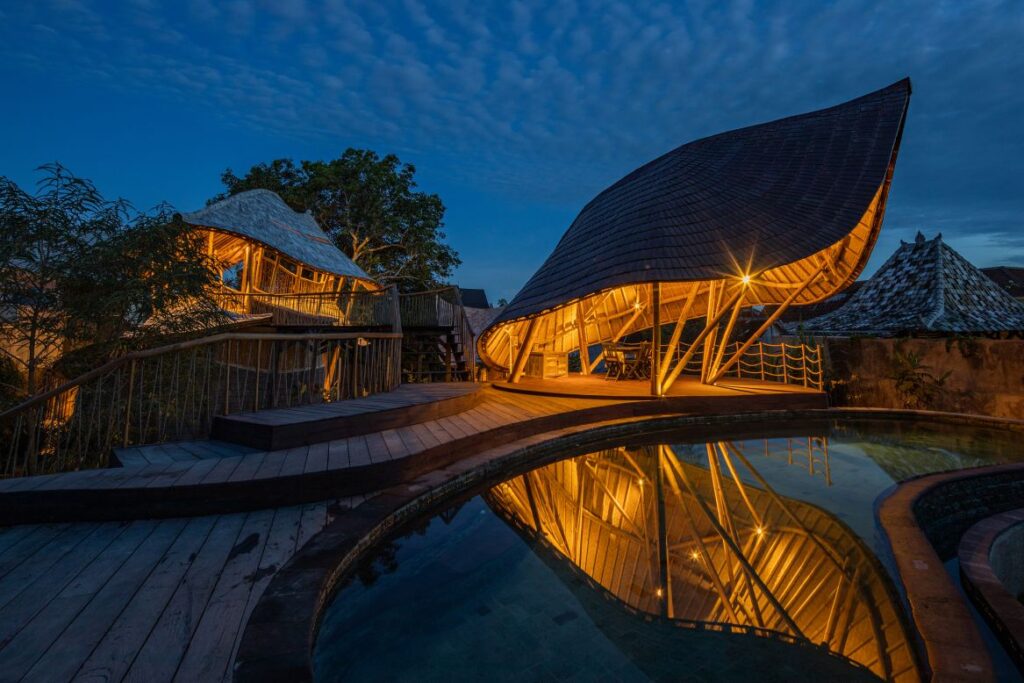
Thailand’s Influence on Global Bamboo Architecture
International Recognition and Awards
Thailand’s pioneering work in bamboo architecture has garnered international recognition and accolades. Architects and designers from Thailand have received prestigious awards and honors for their sustainable and innovative bamboo designs. This recognition has not only elevated the reputation of Thai architects but has also placed Thailand at the forefront of the global bamboo architecture movement.
Bamboo Architecture as a Global Trend
The rise of bamboo architecture in Thailand has sparked a global trend towards sustainable and eco-friendly construction practices. Architects and designers worldwide are increasingly turning to bamboo as a viable alternative to conventional building materials. The success and visibility of Thai bamboo architecture have inspired professionals from other countries to explore the potential of bamboo in their own designs, further driving the global popularity of this sustainable building trend.
Thailand’s Role in Promoting Sustainable Design
Thailand’s commitment to sustainable design and bamboo architecture has positioned the country as a leader in the global sustainability movement. Through exhibitions, conferences, and collaborative initiatives, Thailand has played a pivotal role in promoting sustainable design practices and raising awareness about the benefits of bamboo as a building material. The country’s embrace of bamboo architecture has not only transformed its built landscape but also serves as a guiding inspiration for architects, designers, and policymakers worldwide.
Conclusion
Thailand’s remarkable bamboo architecture represents a harmonious blend of tradition, innovation, and sustainability. From its historical use in traditional Thai architecture to its integration into modern urban environments and eco-tourism resorts, bamboo continues to redefine the possibilities of sustainable construction. Through the characteristics and benefits of bamboo, visionary architects in Thailand have created awe-inspiring buildings that captivate the world and inspire a global movement towards sustainable architecture. As Thailand continues to lead the way in bamboo engineering and design, the future of bamboo architecture appears brighter than ever, promising a sustainable and environmentally conscious approach to the built environment.
